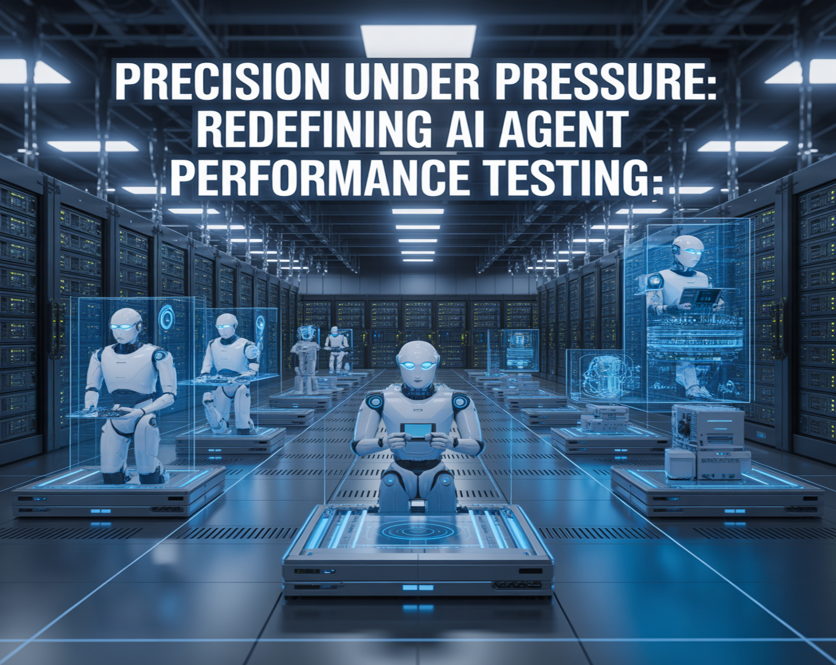An experienced professional with a deep interest in AI quality assurance and performance testing innovation, he recently attended the TestIstanbul Conference, where he presented new methodologies for performance testing AI agents under real-world conditions.

A New Era of Performance Engineering
Artificial Intelligence agents have evolved from simple chatbots to sophisticated systems driving enterprise decision-making, customer service, and process automation. Yet, as these agents take on increasingly complex roles, traditional software testing methods fall short. Performance testing now demands a deep understanding of the non-deterministic, data-dependent, and evolving nature of AI systems.
AI agents don't just execute code; they learn, infer, and adapt. Their performance cannot be measured solely in terms of response time or error rates. Instead, engineering teams must examine how accurately the system interprets user intent, maintains context, and manages computational efficiency during peak demand. This shift has sparked a new discipline: AI performance engineering.
Decoding the Unpredictable
Unlike deterministic systems, AI agents generate variable responses even when presented with similar inputs. This unpredictability stems from the model's dependence on dynamic learning processes and contextual data. Measuring such behavior requires moving beyond traditional benchmarks toward intent-focused testing.
Performance evaluation now includes understanding how AI agents respond to ambiguous queries, manage linguistic diversity, and retain reasoning accuracy under stress. These nuanced parameters reveal how well the system sustains performance consistency when subjected to real-world variability.
Testing Beyond the Metrics
Traditional testing focuses on metrics like response time and throughput. However, AI-specific metrics introduce a richer perspective:
- Intent Resolution Time – gauges how swiftly an agent identifies and processes a user's true intent.
- Confusion Score – measures the system's uncertainty in generating accurate responses.
- Tokens per Second – reflects the agent's real processing capacity instead of mere request volume.
- Inference Efficiency – relates computational resources directly to result quality.
- Degradation Threshold – defines acceptable limits before AI response quality significantly declines.
By emphasizing these AI-native metrics, performance engineers can identify latent inefficiencies long before they impact end-user experience.
Building Smarter Test Harnesses
Effective AI testing requires replicating human unpredictability through sophisticated simulations. A test harness for AI systems incorporates user intent variability, multi-intent queries, and dynamic learning patterns. It also tracks token-level latency, capturing bottlenecks at the micro-interaction level.
Such frameworks emulate how an AI model's performance drifts over time, a phenomenon known as model drift. As models evolve through retraining, their resource utilization and inference accuracy fluctuate. Testing for these conditions ensures long-term reliability and helps organizations plan proactive retraining cycles.
Synthetic Data: The Secret Ingredient
Realistic and diverse test data is crucial for AI performance validation. Engineers now use synthetic data generation to create thousands of controlled yet varied test cases. These include:
- Intent Pattern Analysis – extracting representative examples from production logs.
- Variation Injection – introducing linguistic diversity through synonyms and contextual changes.
- Edge Case Generation – crafting complex or ambiguous queries to stress-test reasoning capabilities.
Through automated scaling, these datasets expand to simulate real-world traffic volumes, providing statistically sound insights into how AI agents behave under sustained load.
Integrating AI Awareness into Tools
Modern testing tools like JMeter are being extended with AI-aware capabilities. Custom samplers measure token-level processing times, while AI-specific profilers monitor inference quality and model resource mapping. Observability platforms now integrate these tools to offer a unified view of model drift, latency distribution, and semantic accuracy.
Such integration transforms AI testing from a reactive activity into a continuous performance discipline, where quality assurance and observability operate hand-in-hand.
Resilience in the Face of Failure
AI systems rely on external APIs, inference engines, and hardware accelerators each a potential point of failure. Resilience testing evaluates how gracefully these agents recover from degraded services, corrupted contexts, or resource starvation. The most effective tests simulate extreme conditions such as bandwidth throttling and GPU saturation to assess true fault tolerance.
By identifying the boundaries of operational stability, teams can design AI systems that maintain reliability even under pressure, ensuring a consistent user experience in unpredictable environments.
From Reactive to Predictive Testing
The evolution of performance testing in AI marks a transition from reactive issue detection to predictive quality assurance. Continuous monitoring, adaptive testing, and intelligent scaling enable organizations to anticipate degradation and optimize proactively. The future belongs to systems that not only function correctly but also perform intelligently, learning, adapting, and improving over time.
At TestIstanbul, Sudhakar Reddy Narra emphasized that this evolution represents more than a technical shift; it's a mindset transformation for engineering teams worldwide. His insights highlight a fundamental truth—AI performance isn't about speed alone, but about sustaining intelligence under stress.

-
 C114 Communication Network
C114 Communication Network -
 Communication Home
Communication Home


